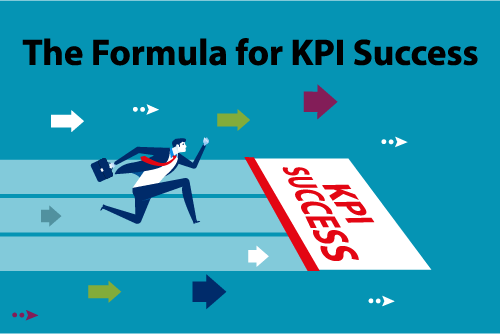I was facilitating a client performance measure development session recently, and the team was wrestling with measure definition. When I reviewed the customer perspective team’s work I found:
Measure Name: % of Customers Satisfied
Description: % of Customers Satisfied
Formula: % of Customers Satisfied
The team was mystified by what the formula should be. The following definitions and examples helped them get back on track.
Measure name is a word or short phrase that names the specific measure and is understood by users. The description details what the measurement is about, including its intent, why it matters and what it includes and excludes. Imagine describing the measure to someone on an elevator. A formula is the mathematical equation or rule used to calculate the measurement, and expressed in symbols, essentially a set of instructions for creating the desired metric.
To demonstrate, below are a few common measures from various walks of life, with an example of a description and formula.
Name: Customer Satisfaction Survey Score
Description: Periodic survey of a sampling of customers, who are asked to quantify an “I am satisfied”-type response on a five-point Likert scale.
Formula: # indicating Agree or Strongly Agree / total # of responses
Name: Fuel Efficiency
Description: the distance traveled per unit of fuel used. Used in the US, UK, and much of Asia. The higher the value, the more efficient the car is at using fuel.
Formula: # of miles driven / # of gallons of fuel used (or # of km driven / # of liters used)
Name: Fuel Consumption
Description: amount of fuel used per unit distance driven, often expressed as liters used per 100 kilometers driven. Used in much of Europe. The lower the value, the more economical a vehicle because it takes less fuel to drive a certain distance.
Formula: (# liters of fuel used / kilometers driven) *100
Name: Batting Average (baseball)
Description: Batting average is used to compare the consistency of batters in baseball. It is calculated as the number of hits divided by the official number of at-bats and is expressed as a decimal to three places of accuracy.
Formula: Total # of hits / total # of at bats, not including walks, sacrifices, or hit by pitches
Name: Steps
Description: Tracking the number of steps walked each day is an effective way to ensure that you are getting enough physical activity each day. Countless research has indicated that measurable benchmarks in fitness can help improve health outcomes.
Formula: Total # of steps walked per day
Name: Graduation Rate
Description: Graduation rates is the percentage of students who graduate from a school within a prescribed time period (which varies between school levels but is typically 150% of the published time for to complete a program). Graduation rates are considered important because it shows how committed schools are to helping students learn all that is required to meet the graduation standard within a reasonable amount of time.
Formula: # of students graduating within a prescribed time period / total # of students in the graduating class
Name: Employee Turnover Rate
Description: Employee turnover is a measurement of how many employees are leaving a company. High turnover can be costly, as replacing employees is expensive. High voluntary turnover of top performers can also be an indicator of poor management or morale issues.
Formula: # of employees (voluntarily) exiting the job / average actual # of employees (during the same period)
For strategy-minded people more interested in discussing lofty strategy options than grinding through data collection and validity details, data definition can be a challenge. But I’ve found that if you can master these three basic data definition steps, you’ll be a long way towards consensus about exactly what you are counting and why.
For more information about KPI / performance measure development, please visit KPI.org/KPIP.
David Wilsey is the Chief Executive Officer with the Balanced Scorecard Institute and co-author of The Institute Way: Simplify Strategic Planning and Management with the Balanced Scorecard.


